Abstract
A naturally occurring immunodeficiency syndrome has been seen in a captive colony of macaque monkeys. This syndrome is seen primarily in the species Macaca cyclopis. Affected animals died with lymphomas (a rare disease in macaques) or such opportunistic infections as Pneumocystis carinii and noma (necrotizing gingivitis). These M. cyclopis exhibited anemia, neutropenia, and a circulating bizarre immature monocyte. In addition, liver function tests suggested hepatitis. Pokeweed mitogen-, concanavalin A-, and xenogeneic cell-stimulated proliferative responses by lymphocytes of animals with the syndrome were dramatically diminished. The T4 (helper, inducer)/T8 (suppressor, cytotoxic) ratio in the peripheral blood mononuclear T-cell populations of M. cyclopis in this colony are decreased when compared with those from either Macaca mulatta in the same colony or normal humans. Epidemiologic evidence implicates a common source agent in this syndrome. The similarity of this syndrome in macaques to human acquired immunodeficiency syndrome suggests that it may provide an important model for studying the human syndrome.
Full text
PDF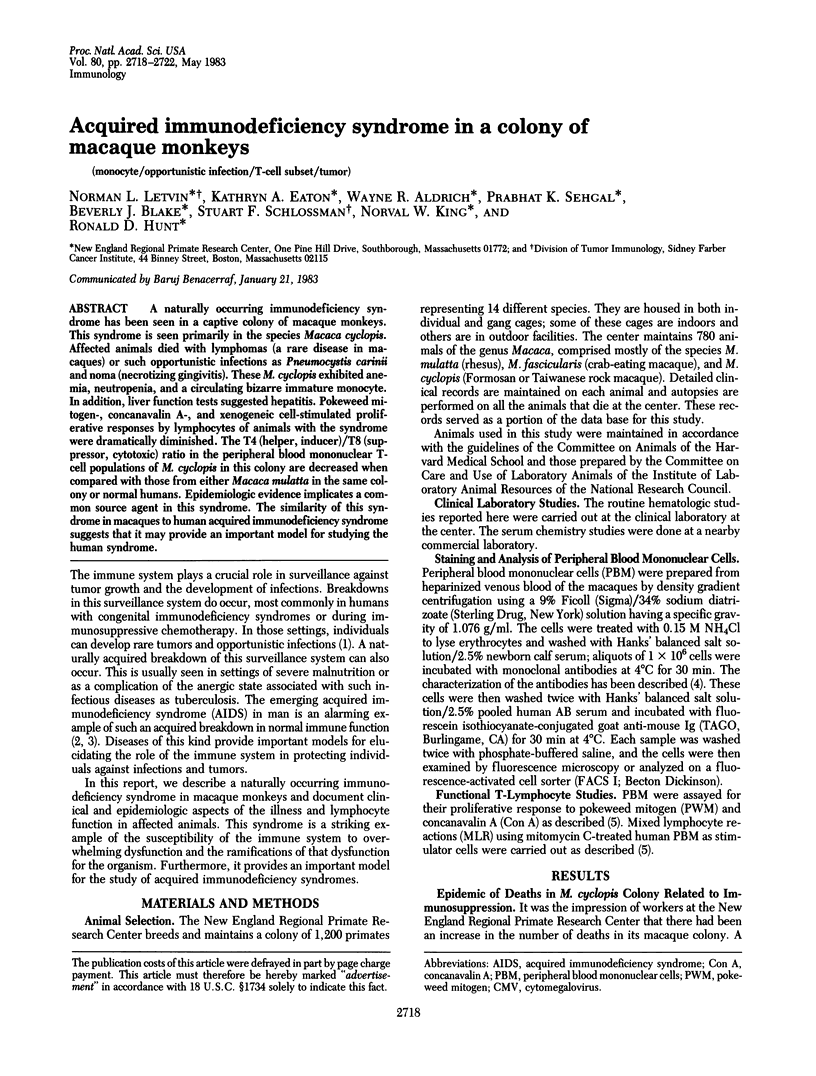
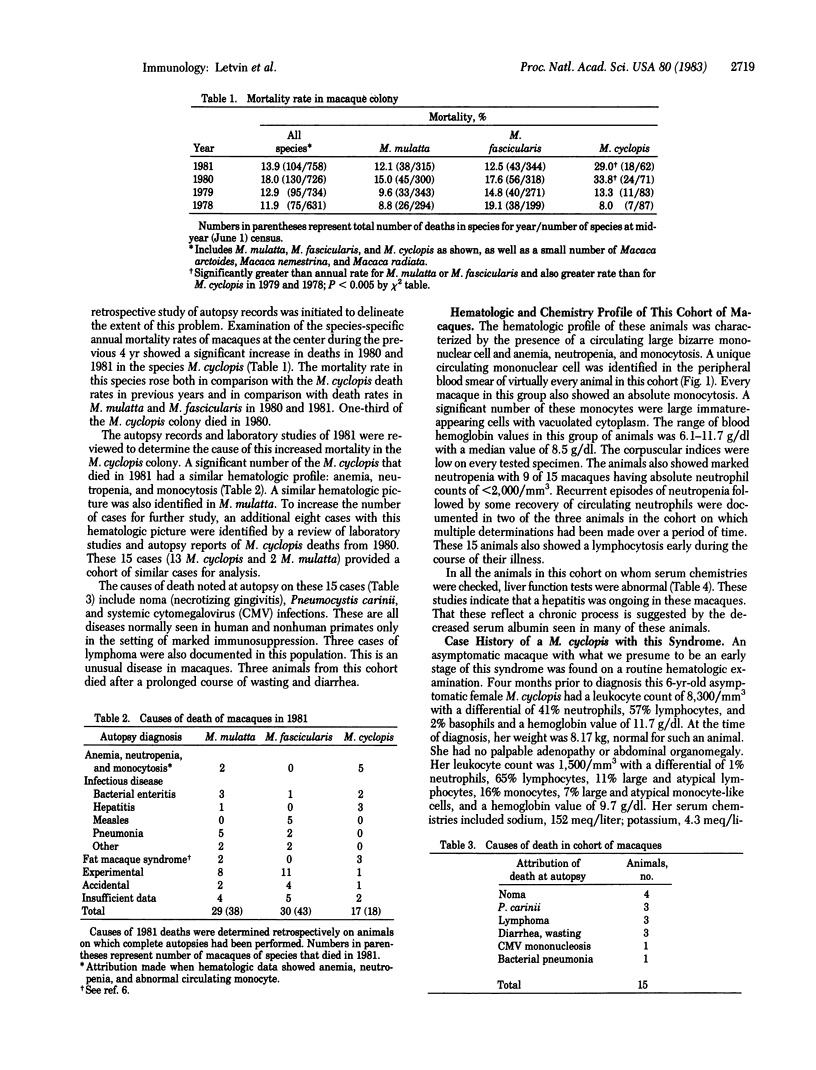
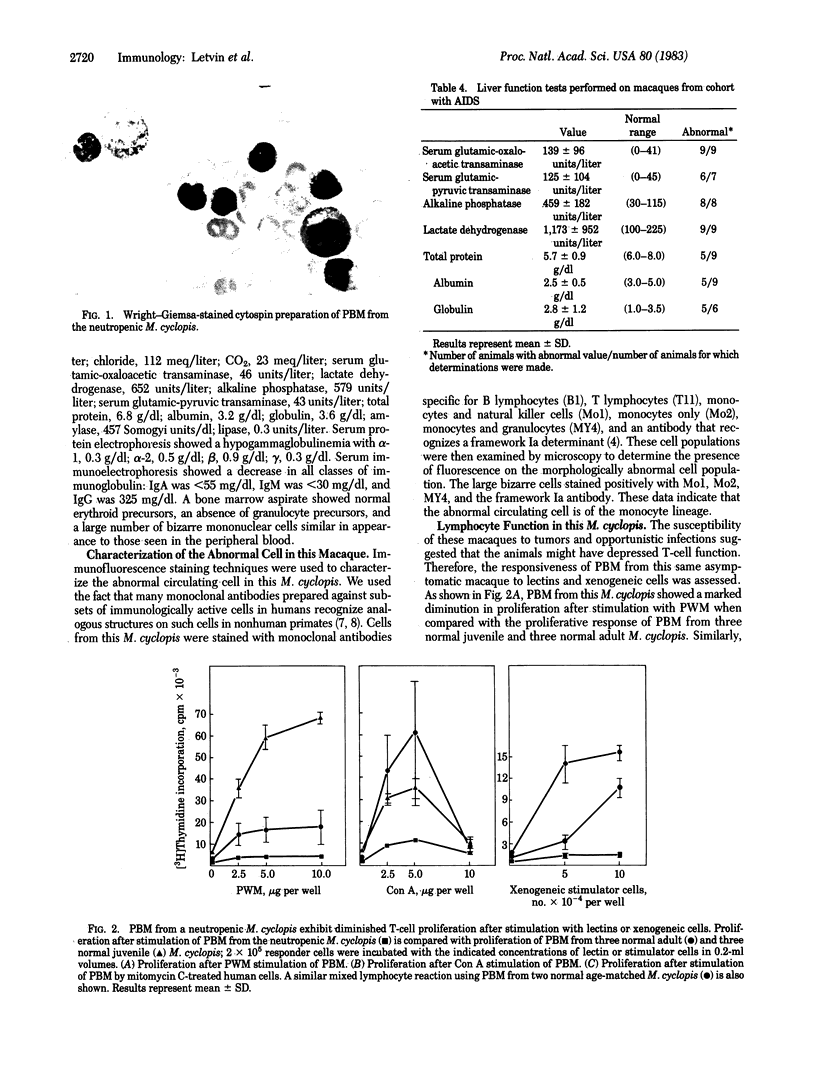
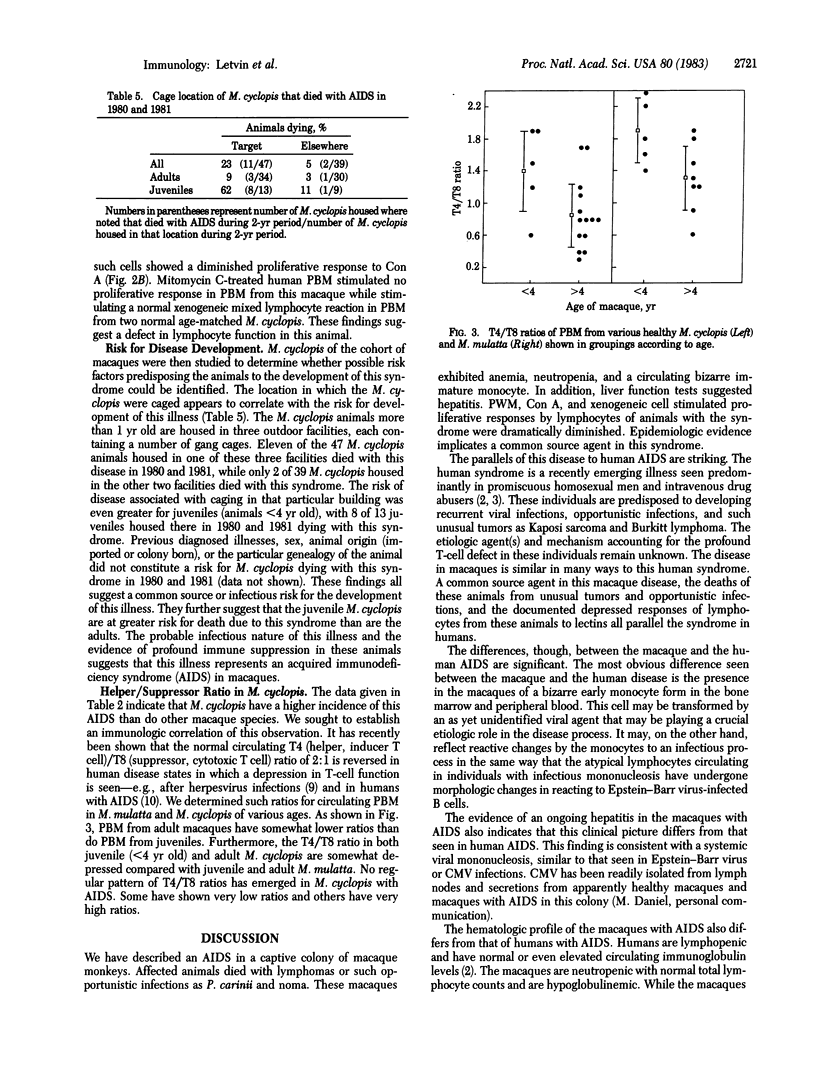
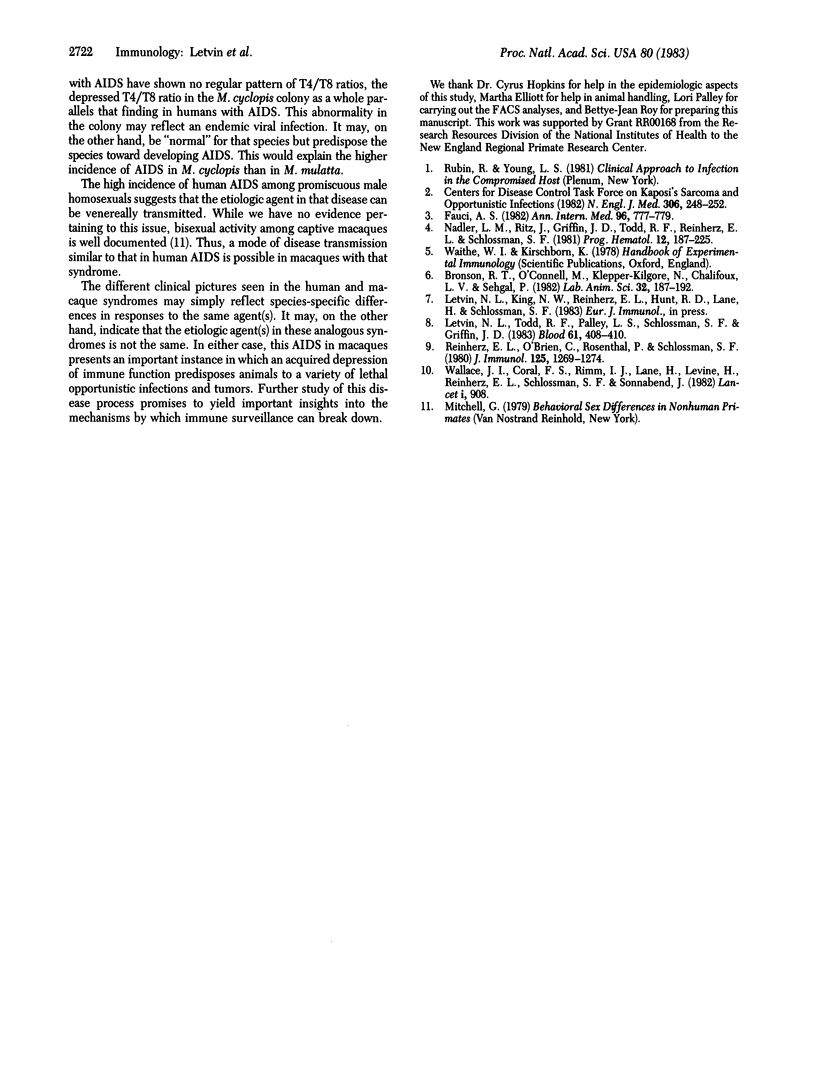
Images in this article
Selected References
These references are in PubMed. This may not be the complete list of references from this article.
- Bronson R. T., O'Connell M., Klepper-Kilgore N., Chalifoux L. V., Sehgal P. Fatal fasting syndrome of obese macaques. Lab Anim Sci. 1982 Apr;32(2):187–192. [PubMed] [Google Scholar]
- Fauci A. S. The syndrome of Kaposi's sarcoma and opportunistic infections: an epidemiologically restricted disorder of immunoregulation. Ann Intern Med. 1982 Jun;96(6 Pt 1):777–779. doi: 10.7326/0003-4819-96-6-777. [DOI] [PubMed] [Google Scholar]
- Letvin N. L., Todd R. F., 3rd, Palley L. S., Schlossman S. F., Griffin J. D. Conservation of myeloid surface antigens on primate granulocytes. Blood. 1983 Feb;61(2):408–410. [PubMed] [Google Scholar]
- Nadler L. M., Ritz J., Griffin J. D., Todd R. F., 3rd, Reinherz E. L., Schlossman S. F. Diagnosis and treatment of human leukemias and lymphomas utilizing monoclonal antibodies. Prog Hematol. 1981;12:187–225. [PubMed] [Google Scholar]
- Reinherz E. L., O'Brien C., Rosenthal P., Schlossman S. F. The cellular basis for viral-induced immunodeficiency: analysis by monoclonal antibodies. J Immunol. 1980 Sep;125(3):1269–1274. [PubMed] [Google Scholar]
- Wallace J. I., Coral F. S., Rimm I. R., Lane H., Levine H., Reinherz E. L., Schlossman S. F., Sonnabend J. T-cell ratios in homosexuals. Lancet. 1982 Apr 17;1(8277):908–908. doi: 10.1016/s0140-6736(82)92177-8. [DOI] [PubMed] [Google Scholar]



